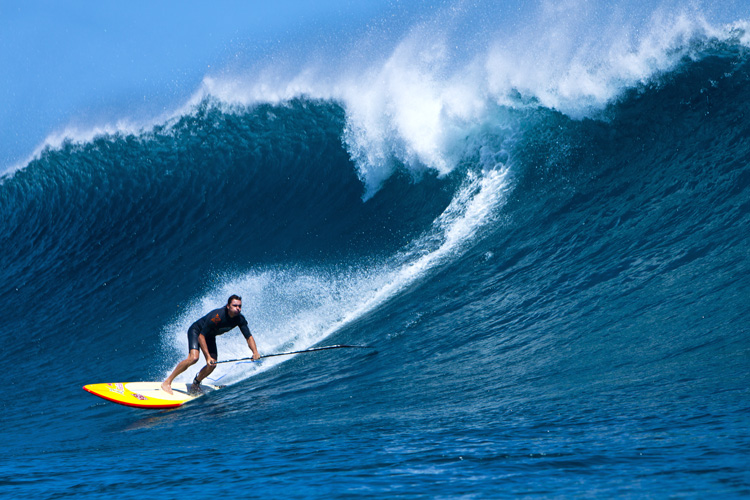Deciding to buy your first paddleboard is a big step, perhaps even greater than giving the sport a try. It shows that you mean business and that you are willing to change your lifestyle for the better.
It should come as no surprise that paddleboarding is the world's fastest-growing water sport.
It is soothing for the mind while working out various muscles in the body, such as the trapezius, lower back, shoulders, chest, abdominals, thighs, and lower leg muscles.
Even better, you can make your SUP session as relaxing or as demanding as you like. This is precisely why, when you go out buying your first paddleboard, you should be very clear about your intentions.
Being such a flexible activity, there are several stand-up paddling disciplines.
The most popular are SUP yoga, SUP racing, SUP touring, and SUP surfing, each more exciting than the other. As might have been expected, there's a type of paddleboard for each of them.
Paddleboards are made from different materials and differ in shape and size, all of which have a great impact on the stability, maneuverability, and speed of the board.
Once you decide on the style, here's what to look for when you buy your first paddle board.
The Size of the Paddle Board
As with surfboards, your paddleboard should match your figure. If you're of small stature and under 125 pounds (56 kilograms), then a small-size paddleboard is the way to go.
Anything under 9 feet (2.7 meters) will be easy to maneuver (and also to transport). Smaller-size paddle boards are typically used for SUP surfing, but they are capable of sustaining a heavier paddler, too.
Once you find your balance and become comfortable on the board, you can move on to a bigger paddleboard, which will not seem difficult to handle anymore.
Keep in mind, though, that larger boards are more suitable for SUP touring, as they offer plenty of space for luggage and for you to unwind and have a rest in between the paddling sessions.
Due to their volume, they are not recommended for SUP surfing, as they are more difficult to handle.
If you weigh 150 pounds (68 kilograms) or more than an all-around paddleboard around 10.6-12.6 feet (3.2- 3.8 meters) would be ideal.
The wider and thicker the board, the more stable it will be on the water. All-around paddleboards are a great fit for SUP yoga and weekend escapes to the beach or lake.
Types of Paddle Boards
The all-around boards are the most popular and affordable paddleboards on the market today.
If you're beginning and still exploring the many possibilities SUP has to offer, then this is a sure bet. Here are the basics if you are interested in a particular SUP style or board size.
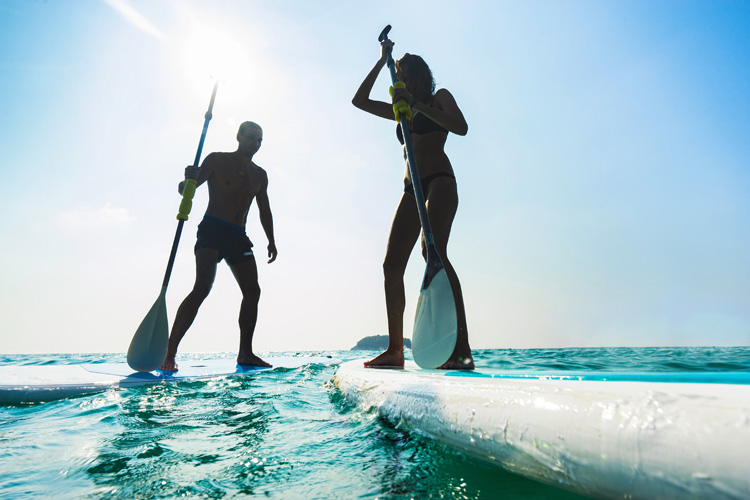
SUP Touring Boards
Touring paddleboards are the most versatile option, as they are easy to paddle in any weather conditions.
They are great for beginners taking their first steps on the board and can be used anywhere on flat water.
You can use them for cruising, long-distance journeys, fishing, SUP yoga, and paddling with your dog or kids, thanks to their volume and slightly wider deck, which takes the load off any luggage or extra "passengers."
If you are looking to take up SUP racing in the future, the touring/cruising board offers great practice, as it helps you build endurance.
These boards range in length between 11 to 14 feet (3.3-4.2 meters) and are usually made from fiberglass, making them highly durable. However, this also makes them slightly heavier than racing boards.
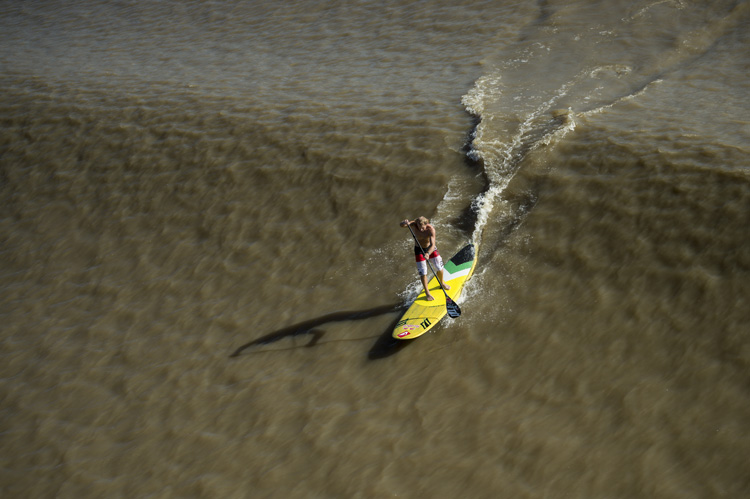
SUP Surfing Boards
Regardless of your surfing level, SUP surfing is for everyone - from beginners to pros.
Stand-up paddling surfing boards are typically shorter, between 7 to 10.5 feet (2.1-3.2 meters), making it easy to learn and perform various tricks on them.
The smaller the board, the easier it is to handle. However, this also makes it more unstable. Therefore, it's best to choose the size according to your ability and weight.
These boards are typically made from fiberglass and carbon. Inflatable SUPs can also be used for surfing, especially for beginners who are taking their first steps and might feel safer than on a hard-top board.
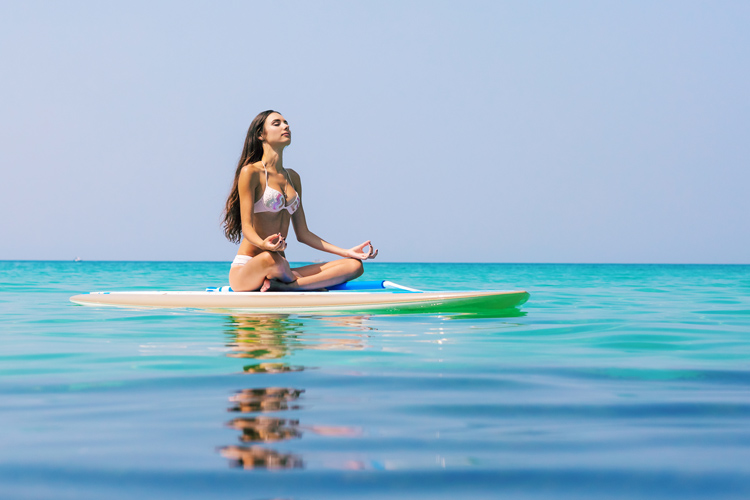
All-Around Paddle Boards
Beginner paddlers, surfers, SUP racers, SUP yogis, and white water surfers who like to do a little bit of everything instead of devoting themselves to one particular style will love the all-around paddleboard.
Furthermore, it is easy to share with your friends and family.
This versatile board has a length that ranges between 10 and 12.6 feet (3-3.8 meters). Its narrow tail makes it easy to maneuver, while its extra width makes it easy to paddle.
These boards are usually made from fiberglass composite and are an excellent choice for both beginners and intermediate paddlers.
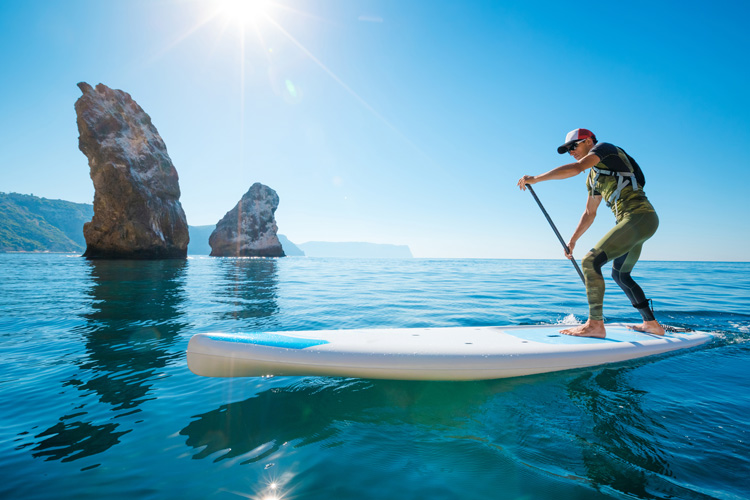
SUP Racing Boards
SUP racing is currently the fastest-growing paddle-boarding discipline. If you are the athletic and competitive type, then you should definitely give it a try.
SUP racing isn't just for competitions - it can be a leisurely activity with your friends and family. If you need some motivation, you can join a SUP racing club.
Racing paddle boards are narrower and longer, with boards built for long-distance races being up to 14 feet (4.2 meters) long.
They are fast and lightweight, usually made from carbon fiber and Kevlar. Of course, these materials and designs make them the most expensive paddleboards on the market.
Check the Paddle Board Carefully
Whether you opt for a new or used paddleboard, always double-check it for pressure dings and cracks.
Examine the grip pad and make sure it is tightly secured to the board and that it's not being peeled off.
For used boards, look for signs of delamination from sun exposure. Also, check for cracks or dings on the rails and repair them.
These can cause water to get inside the board, which will make it heavy and sluggish. With used paddleboards, it's always best to take them out for a spin.
Words by Octavia Drughi | Mountaineer, Rock Climber, and Travel Writer for BookSurfCamps.com
